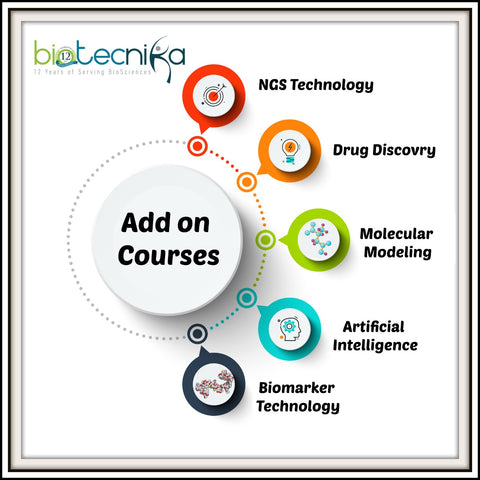
Molecular Docking Training & Certification- Self Learning Course


Molecular Docking Training & Certification- Self Learning Course
The best way to grab employment opportunities is to exhibit your skills and knowledge depth in your resume, which attracts scientists & employers. The first thing that segregates you from others is your education qualification. If you have an excellent academic background with additional medals to your name, then you can be rest assured your knowledge level and hard work are assessed.
BioTecNika exclusively brings you the Molecular Docking Training & Certification- Self Learning Course. Till today's date, we have successfully trained thousands of research enthusiasts who were not only Bsc & Msc students but Young scientists, university & college faculties, Senior professors, Biotech company executives from all across the world.
Molecular Docking Training & Certification is a self-learning course designed to learn various types of docking. Molecular docking studies are used to determine the interaction of two molecules and to find the best orientation of ligand, which would form a complex with overall minimum energy. It is a vital tool in structural molecular biology and CADD that is computer-assisted drug design and successful docking methods search high-dimensional spaces effectively and use a scoring function that correctly ranks candidate dockings.
With the successful launch of the first course in the series of add on courses, Biotecnika will be announcing the next course, which is on Molecular docking.
Molecular docking has become an essential tool after the completion of the human genome project, which has resulted in an increasing number of research activities in that field.
So what is Molecular docking???
Molecular docking means the interaction between a small molecule and a protein at the atomic level, which allows us to characterize the behavior of small particles in the binding site of target proteins as well as to elucidate fundamental biochemical processes. The docking process involves two necessary steps: prediction of the ligand conformation as well as its position and orientation within these sites (usually referred to as pose) and assessment of the binding affinity. The completion of the human genome project and the generation of experimentally solved (X-ray crystallography and NMR techniques) protein structure has resulted in an increasing number of new therapeutic targets for drug discovery.
The advancements in drug discovery lead us to virtual screening/ High throughput screening. A virtual screening approach means we can simultaneously dock thousands/millions of small molecules to find a lead molecule. There are two different types of virtual screening available, i.e. Structure-based virtual screening and ligand-based virtual screening. Structure-based virtual screening means when the established/experimentally solved three-dimensional structural is there, then a large number of small molecules can act against those targets. When a set of active ligand molecules is known, and little or no structural information is available for targets, the ligand-based methods, such as pharmacophore modeling and quantitative structure-activity relationship (QSAR) methods, can be employed. In recent years combinatorial library-based screening is also available for successful drug discovery.
Molecular docking is of different types as follows: Protein-Protein docking, Protein-Ligand docking, Rigid ligand, and rigid receptor docking, Flexible ligand and rigid receptor docking, Flexible ligand and flexible receptor docking, Local move monte Carlo sampling.
Docking programs based on different algorithms were developed to perform molecular docking studies, which have made docking an increasingly important tool in pharmaceutical research. The various algorithms used in multiple docking programs such as Matching algorithm, MCSS, LVDI, Incremental construction, and Monte Carlo, etc. The scoring function is vital for each application in docking. Computational approaches show that they have the power to screen hits from a vast database and design novel small molecules. Proper, as well as low computational cost scoring functions, may bring docking application to a new stage.
Commonly used Protein-Ligand Docking & Virtual screening software
- AUTODOCK is a commonly used suit and is perhaps one of the most cited platforms for the prediction of protein-ligand docking studies (http://autodock.scripps.edu/).
- LeDock is a computer molecular modeling simulation software. It is fast, flexible, and accurate docking of ligands with protein targets, with a simplified interface.
- Lead Finder software is a computational chemistry application for modeling protein-ligand interactions. Leading Finder can be used in molecular docking studies and for the quantitative evaluation of ligand binding and biological activity. It is free for individual non-commercial academic users.
- GOLD (Module from Discovery studio software)- It is best suited for Protein-Ligand docking
- Glide (Module from Schrodinger software)- It is a ligand docking program for predicting protein-ligand binding modes and ranking ligands via high-throughput virtual screening
- Molegro virtual docker- Molegro Virtual Docker is an integrated platform for predicting protein-ligand interactions.
- MOE - Graphics and manipulation, Small molecule structure building, Virtual screening conformational analysis facilities, Molecular Mechanics, Molecular dynamics.
Eligibility For Molecular Docking Training & Certification- Self Learning Course
- The courses are designed to suit Life Science graduates, postgraduates, teaching, and industry professionals along with research enthusiasts. All individual streams can apply.
- A basic level of knowledge about various concepts involved in life science is required.
- Good internet speed for live streaming is required.
Benefits of Molecular Docking Training & Certification- Self Learning Course:
- The content of the courses has been designed to match the industry standards.
- The course content will be available offline for reference after the scheduled date and duration.
- Start and finish the course at your pace! Start learning whenever you can. There is no need to bend your schedule.
- Understand the applications of these courses in the industry and how to use the same for strengthening your job applications.
- Certificates will be provided on course completion that adds weight to your profile.
Hurry up! Grab your seat now for the Molecular Docking Training & Certification !! Limited seats are available!
For further clarifications call us on 080-5099-7000/ 1800-1200-1818
Syllabus for Molecular Docking Training & Certification- Self Learning Course
Introduction to basics of Molecular docking
Day 1: Basic Chemistry Review & Drug Discovery
Day 2: Bio-molecular Structure & their Molecular Interactions and Recognition
Day 3: Intro. to Methods in 3-D Structure Determination and Molecular modeling
Day 4: Molecular Conformation & Primary Sampling Methods for Computer Simulations
Day 5: Predicting Protein Structure
DAY 6: Structure-based drug design
DAY 7: Force fields, inter and intramolecular interactions, Molecular Dynamics Simulations
DAY 8: Combinatorial Library Design and Atomic constant
DAY 9: Introduction to software’s used in molecular docking- Demonstration
FAQ- Molecular Docking Training & Certification
-
What is an Online Self Learning Course?
An Online Self Learning Certification Course means you can log in any time and study at your own pace. However, you must watch 90% of all the lessons to proceed to the next lesson.
-
How to get started with the self-learning course?
Once you enroll for the excellent course, You will get the activation email almost immediately. Start and finish the course at your pace! Start learning whenever you can. There is no need to bend your schedule.
-
How to unlock the next lesson of the Molecular Docking Training & Certification Course?
Once you master a session, hit the Complete and Continue button on the top to begin your next session. Make sure you don't skip through! Unless you complete the current lesson, you cannot proceed to the next lesson
-
What is the time limit to complete the course?
Unlimited access until you decide to complete the course. But once you have given your certification test, the course ends. If you fail in the test, you can revise the course again
-
How do I evaluate myself?
Time to test all the knowledge you have gained. Take the test at the end of the course and evaluate yourself. Every Self Learning Course has a test at the end.
-
How to get the hard copy certificate?
To avail, the hard copy certificate, Get 90% and above in test and Get Certified! The certificate will be sent to your doorstep. Now you know not to skip through the course.
-
Whom do I contact for any further queries?
Having any trouble? Get in touch with our team. Click on that Chat thingy or write to us cst@biotecnika.org or info@biotecnika.org
8. What is BioTecNika’s Refund Policy for these Self Learning Courses?
If you do not like the course, We will refund your Fees (if requested within 21 days of enrollment), however, in that case, you will not get the hard copy certificate. Also, you must not have unlocked more than two lessons of the Course.
For further clarifications on the Molecular Docking Training & Certification call us on 080-5099-7000/ 1800-1200-1818









